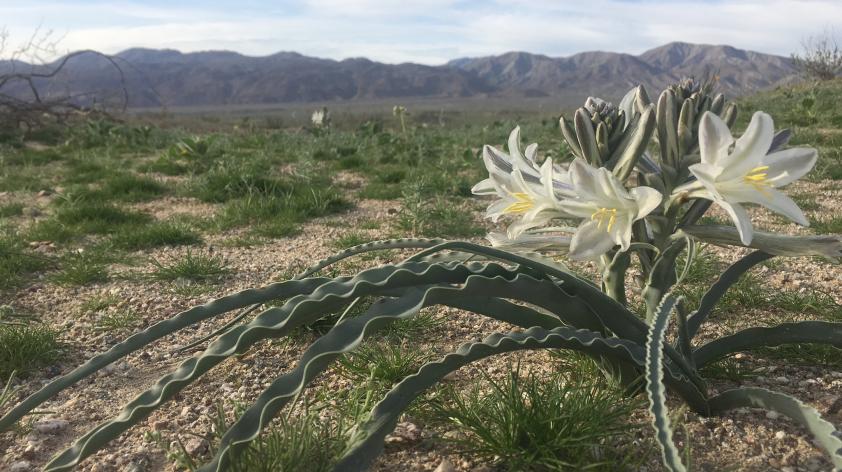
Conserving San Diego’s Geophytes
We had a great rainy season last winter, ending an arduous drought and beginning a busy spring for us at the Native Plant Seed Bank. It is important that we take advantage of heavy rainfall years, and there are several types of plants in particular that we focus on after such rain.
Geophytes are plants with perennating storage structures underground, such as bulbs, corms, and rhizomes. These plants retreat underground in adverse conditions, allowing them to allocate resources for use when conditions are more favorable. Geophytes are particularly common in Mediterranean climates, having adapted to cope with our hot dry summers and falls. In these climates, they tend to begin their growth cycles following the winter rains. They then grow throughout the winter and spring, flower, seed, and die back on the soil surface, going dormant underground only to repeat the cycle when conditions are favorable again. But what if favorable conditions occur infrequently, as we experienced during the drought? Or what if these conditions begin to occur erratically with a changing climate?
Population numbers often fluctuate greatly from year to year in geophytes, making it difficult to know how many individuals there truly are. It might appear as though a population is in decline, when, in fact, individuals are simply hiding because conditions are unsuitable. There is no way to tell how many bulbs or corms are underground in a given population, and whether they are alive or dead. It is also possible that individuals within a population have different triggers that break their dormancy.
For example, individuals that flower after a season with heavy rain in November might be different from the individuals that flower after a season with heavy rain in January. Because of this, it is important to make seed collections across different years and climatic conditions to ensure that the genetic diversity of the entire population is captured.
San Diego County is home to many different species of geophytes. Many of our rare monocots, such as Calochortus dunnii, Brodiaea orcuttii, and Bloomeria clevelandii are geophytes with bulbs or tubers, but perennial dicots like the rare Dudleya brevifolia, Monardella hypoleuca ssp. lanata, and Hosakia crassifolia var. otayensis have also adopted this growth strategy, using corms or rhizomes. To read about some of these rare plants, which we are working to conserve as members of the California Plant Rescue (CaPR), click the links to my other blogs below!
After so much rain we are also focusing a lot of our time this year on endangered vernal pool plant species. Many of these annuals are very specialized and fascinating. Keep an eye out for my next blog highlighting some of these efforts!
http://institute.sandiegozoo.org/science-blog/california-plant-rescue-2016-review
http://institute.sandiegozoo.org/science-blog/freezing-san-diego%E2%80%99s-rarest-seeds
http://institute.sandiegozoo.org/science-blog/saving-san-diego%E2%80%99s-rare-mints
http://institute.sandiegozoo.org/science-blog/rare-plant-seed-collections-san-diego-county
http://institute.sandiegozoo.org/science-blog/conserving-rare-plants-otay-mountain
http://institute.sandiegozoo.org/science-blog/california-plant-rescue













